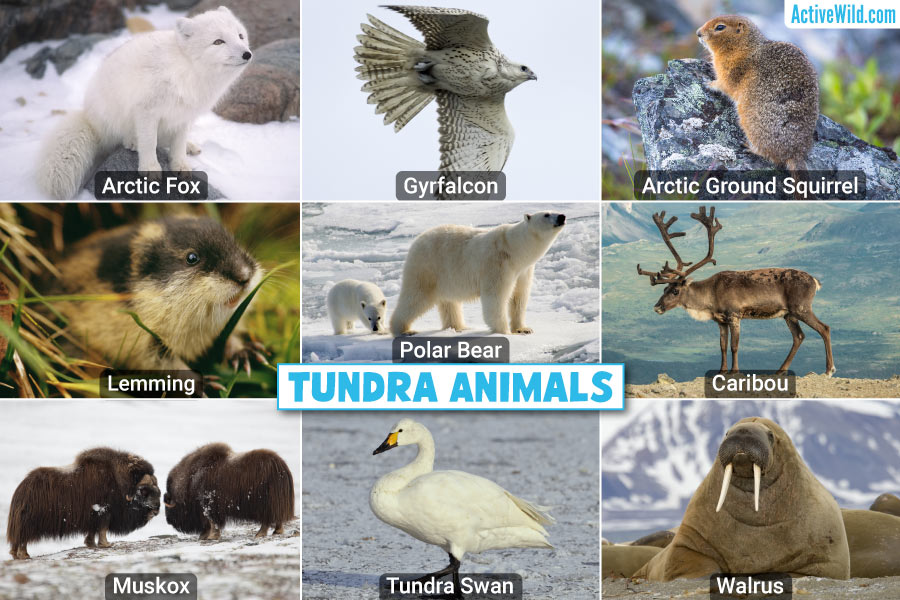A list of tundra animals with pictures and facts, plus interesting information on the tundra biome.
Scroll down to see all of the animals, or use the index below to go directly to a particular species and learn about the tundra biome.
Page Index
Tundra Animals List
- Arctic Fox
- Arctic Ground Squirrel
- Arctic Hare
- Arctic Skua
- Arctic Tern
- Arctic Wolf
- Beluga Whale
- Bowhead Whale
- Caribou / Reindeer
- Short-Tailed Weasel
- Greenland Shark
- Gyrfalcon
- Harp Seal
- Ivory Gull
- Lemmings
- Muskox
- Narwhal
- Northern Pintail
- Northern Red-backed Vole
- Polar Bear
- Ringed Seal
- Rock Ptarmigan
- Snow Bunting
- Snow Goose
- Snowy Owl
- Tundra Shrew
- Tundra Swan
- Walrus
What Is The Tundra?
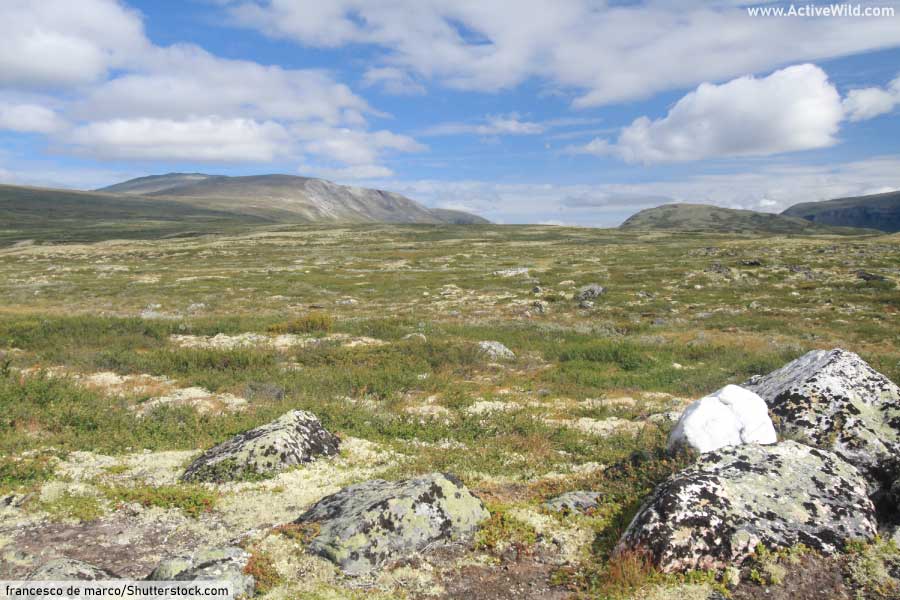
The tundra is a biome characterized by its cold, harsh climate, low biodiversity, and short growing season. Tundra landscapes are relatively flat and treeless, with the ground often being permanently frozen, a condition known as permafrost.
Summers in the tundra are short and cool, with temperatures rarely exceeding 50 degrees Fahrenheit (10 degrees Celsius), while winters are long, dark, and extremely cold, with average temperatures being below freezing for at least half of the year.
The harsh conditions of the tundra biome limit the types of organisms that can survive there. Plant life is mainly composed of grasses, mosses, lichens, and dwarf shrubs.
Although inhospitable, the tundra is home to a number of animal species, many of which have adaptations for life in these extreme conditions.
Where Is Tundra Found?
There are three main types of tundra: Arctic tundra, Antarctic tundra, and alpine tundra. Arctic tundra is found in the far northern regions of North America, Europe, and Asia; similar conditions can be found in Antarctica (Antarctic tundra) and several mountainous regions (Alpine tundra).
You can find out more about the tundra on this page: The Tundra Biome Facts
Animals That Live In The Tundra
Examples of Arctic tundra animals include mammals such as the caribou, arctic fox, polar bear, lemmings, ringed seal, harp seal and Arctic wolf; and birds such as the Arctic skua, snow goose and snowy owl.
(In the list below are pictures and facts on these and many other Arctic tundra animals.)
Antarctic tundra is home to penguins such as the Adélie penguin, emperor penguin, and gentoo penguin; numerous other seabirds; and seals such as the crabeater seal and leopard seal. Animals found in alpine tundra include marmots, pikas, yak, snow leopard and mountain goat.
Why Is The Tundra Important?
The tundra plays a crucial role in the planet's climate regulation, and despite its tough conditions, it is a delicate ecosystem that is highly sensitive to environmental changes and human activities.
Arctic Tundra Animals
Below is a list of animals found in the Arctic tundra of North America and Eurasia.
Arctic Fox
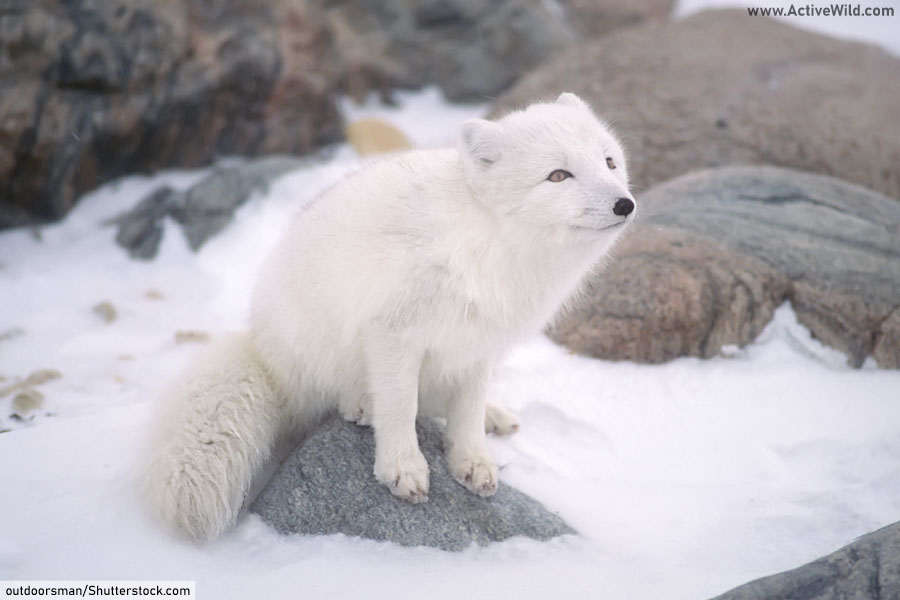
Scientific name: Vulpes lagopus
Family: Canidae
Where found: Arctic regions of the Northern Hemisphere
Conservation status: Least Concern
The Arctic Fox is a small member of the dog family Canidae adapted to survive in the harsh Arctic environment. It has thick, warm fur that changes color with the seasons—white in winter for camouflage in the snow, and brown or gray in summer.
Arctic Foxes are omnivores and opportunistic feeders, with a diet of rodents, birds, eggs, and plant material. These adaptable tundra animals are known for following polar bears to scavenge on leftover kills.
Discover More with Active Wild
You can find out more about this animal on this page: Arctic Fox Facts
You can see EVERY species of dog on this page: Wild Dog Species List with Pictures and Facts
Arctic Ground Squirrel
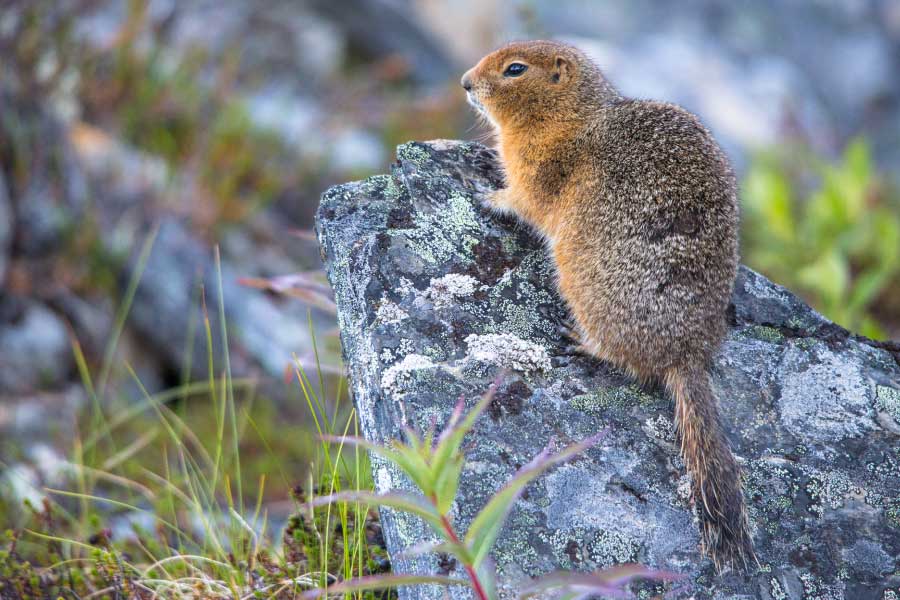
Scientific name: Urocitellus parryii
Family: Sciuridae
Where found: Arctic regions of North America and eastern Siberia
Conservation status: Least Concern
The Arctic Ground Squirrel is a medium-sized rodent adapted to cold environments. It has a thick fur coat that varies from reddish-gray to brown.
The diet of the Arctic Ground Squirrel consists primarily of seeds, fruits, leaves, and small invertebrates.
The Arctic Ground Squirrel holds the record for having the longest hibernation of all animals; this tundra species is known to hibernate for up to 8 months in the coldest parts of its range.
Discover More with Active Wild
You can find out more about this animal on this page: Arctic Ground Squirrel Facts
You can find out more about rodents on this page: Rodents – The Ultimate Guide
Arctic Hare
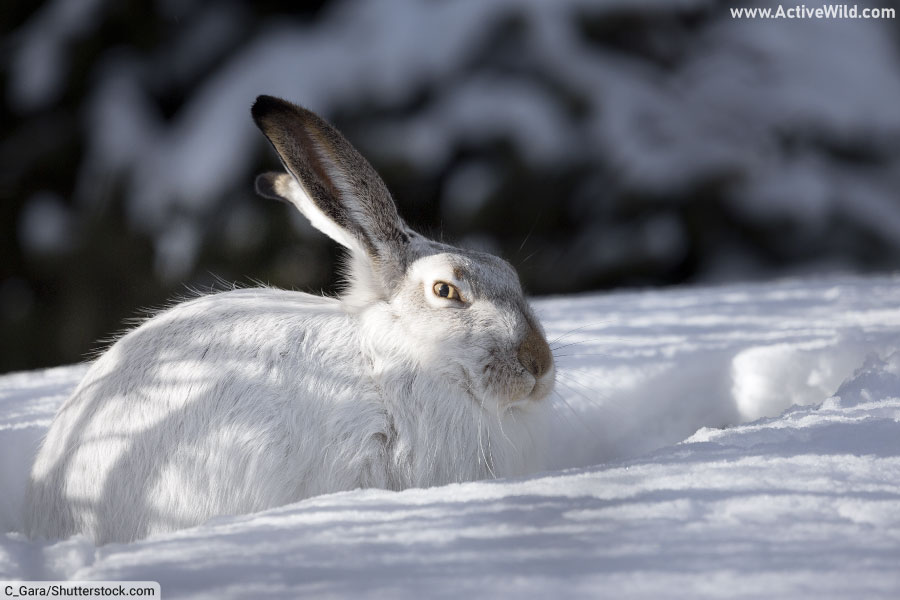
Scientific name: Lepus arcticus
Family: Leporidae
Where found: Arctic regions of North America and Greenland
Conservation status: Least Concern
The Arctic hare is a large species of hare adapted to the extreme cold climate of the Arctic tundra. Its thick coat changes from brown or gray in summer to white in winter for camouflage.
An incredibly fast runner, the Arctic hare is capable of reaching speeds of up to 60 kilometers per hour / 40 mph.
The Arctic hare is primarily herbivorous, with Arctic willow making up the bulk of its diet. It also eats the leaves, twigs, and bark of other plants, and has been reported to occasionally eat meat.
Discover More with Active Wild
You can find out more about this animal on this page: Arctic Hare Facts
Arctic Skua

Scientific name: Stercorarius parasiticus
Family: Stercorariidae
Where found: Arctic regions of Europe, Asia, and North America
Conservation status: Least Concern
The arctic skua, also known as the parasitic jaeger, is a medium-sized seabird known for its aggressive behavior. It has a varied plumage that ranges from dark brown to light brown with a dark cap, and can be identified by a tail streamer.
Arctic Skuas are known for their kleptoparasitic feeding behavior, chasing other birds to steal their catches. They feed mainly on fish and small mammals, and also consume the eggs and chicks of other bird species.
The species breeds on the Arctic tundra and migrates to the Southern Hemisphere during the winter.
Discover More with Active Wild
You can find out more about birds on this page: Birds – The Ultimate Guide
Discover different types of birds on this page: Types of Birds
Arctic Tern
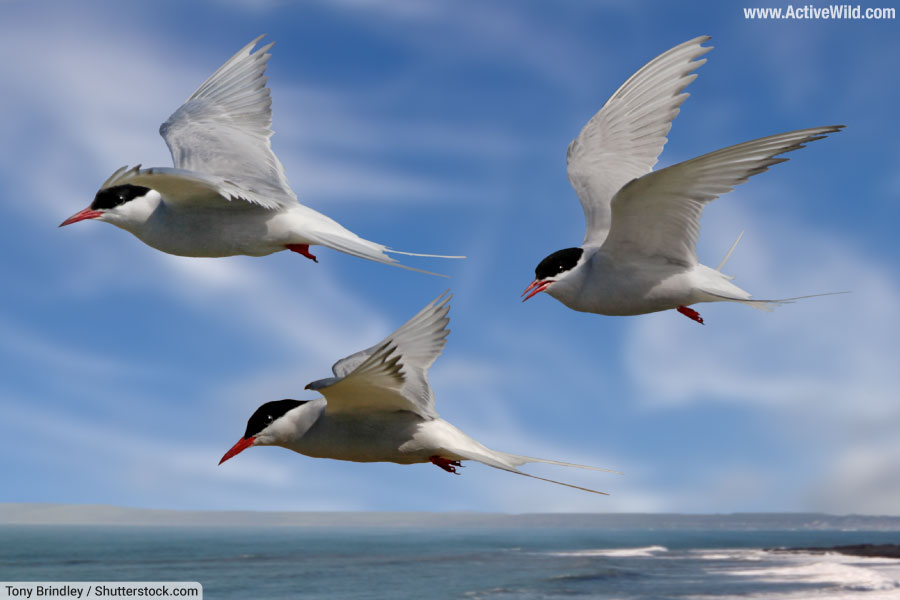
Scientific name: Sterna paradisaea
Family: Laridae
Where found: Arctic and sub-Arctic regions during the breeding season, migrates to the Antarctic coast for the Southern Hemisphere's summer
Conservation status: Least Concern
The arctic tern is a small seabird known for its incredible long-distance migration, in which it covers between 40,000 and 70,000 kilometers / 24,840 and 43,470 miles each year. No other animal migrates as far.
The arctic tern has a slender body with a light grey and white plumage, red beak, and black cap.
Arctic terns feed on fish and invertebrates, and are known for their aggressive defense of their nests and young.
Discover More with Active Wild
You can find out more about birds on this page: Birds – The Ultimate Guide
Discover different types of birds on this page: Types of Birds
Arctic Wolf

Scientific name: Canis lupus arctos
Family: Canidae
Where found: Arctic regions of North America and Greenland
Conservation status: Least Concern
The Arctic Wolf is a subspecies of the gray wolf adapted to survive in the harsh Arctic environment. It has a thick, white fur coat for insulation and camouflage in the snow.
Arctic Wolves feed mainly on muskoxen and Arctic hares, and they are known for their endurance in pursuing prey. Unlike several other wolf subspecies, Arctic Wolves are not threatened by hunting or persecution due to remote tundra habitat in which they live.
Another wolf subspecies, the tundra wolf Canis lupus albus, is found in tundra regions of Europe and Asia.
Discover More with Active Wild
You can find out more about the gray wolf on this page: Gray Wolf Facts
You can see EVERY species of dog on this page: Wild Dog Species List with Pictures and Facts
Beluga Whale
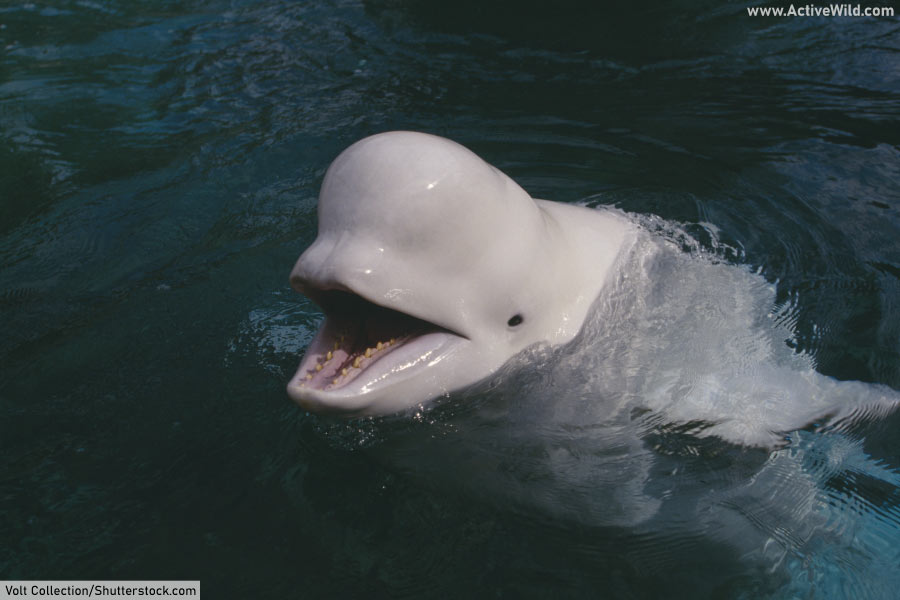
Scientific name: Delphinapterus leucas
Family: Monodontidae
Where found: Arctic and sub-Arctic waters
Conservation status: Near Threatened
The Beluga Whale is a small, white whale known for its bulbous forehead (known as a “melon”) and absence of a dorsal fin. It is a highly social animal, often forming pods of up to several hundred individuals.
Beluga Whales primarily feed on fish, crustaceans, and worms. They are known for their wide range of vocalizations, which have earned them the nickname "canaries of the sea."
Discover More with Active Wild
You can find out more about this animal on this page: Beluga Whale Facts
Find out more about whales on this page: Are Whales Mammals?
Bowhead Whale

Scientific name: Balaena mysticetus
Family: Balaenidae
Where found: Arctic and sub-Arctic waters
Conservation status: Least Concern
The Bowhead Whale is a baleen whale known for its massive bow-shaped skull, which it uses to break through Arctic ice. It has a dark body, white chin, and a thick layer of blubber for insulation in the cold waters.
Bowhead Whales primarily feed on zooplankton. They are one of the longest-living mammals, with a lifespan that can exceed 200 years.
Discover More with Active Wild
You can find out more about this animal on this page: Bowhead Whale Facts
Discover different types of mammals on this page: Types of Mammals
Caribou / Reindeer
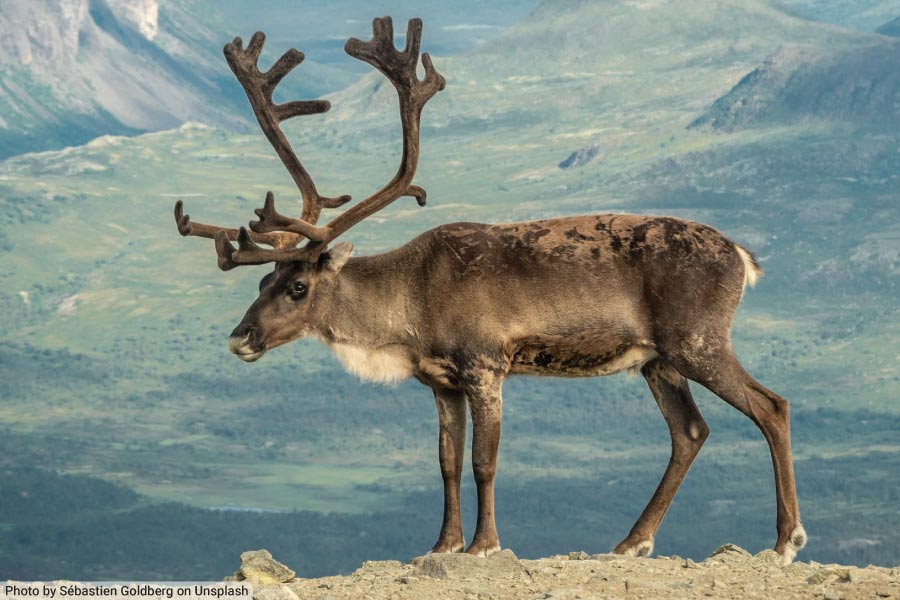
Scientific name: Rangifer tarandus
Family: Cervidae
Where found: Arctic and sub-Arctic regions of North America, Europe, Asia, and Greenland
Conservation status: Vulnerable
The Caribou, also known as a reindeer in Europe, is a large mammal known for its large, branching antlers, which are present in both males and females. (The caribou is the only member of the deer family, Cervidae, in which females have antlers.)
The caribou has a thick coat that varies in color from white to brown. It feeds mainly on lichens in winter, and leaves, stems, and flowers in summer.
This tundra animal is known for its long-distance migrations, which are among the longest of any terrestrial mammal. Some Canadian caribou populations travel 5,000 km / 3,000 miles in one year.
Discover More with Active Wild
You can find out more about this animal on this page: Caribou Facts
You can see more animals with antlers on this page: Animals With Antlers
Short-Tailed Weasel

Scientific name: Mustela erminea
Family: Mustelidae
Where found: Northern regions across North America, Europe, and Asia
Conservation status: Least Concern
The short-tailed weasel, also known as the stoat or ermine, is a small mammal with a slender body and short legs. Its coat changes color with the seasons, being brown in summer, and white in winter for camouflage in the snow.
A carnivore, the short-tailed weasel feeds mainly on rodents. It is known for its agility and speed, which it uses to pursue prey.
The short-tailed weasel is found in a variety of habitats and has several subspecies. The tundra stoat subspecies Mustela erminea arctica, is particularly associated with the Arctic tundra.
Discover More with Active Wild
You can find out more about mammals on this page: Mammals – The Ultimate Guide
Discover different types of mammals on this page: Types of Mammals
Greenland Shark
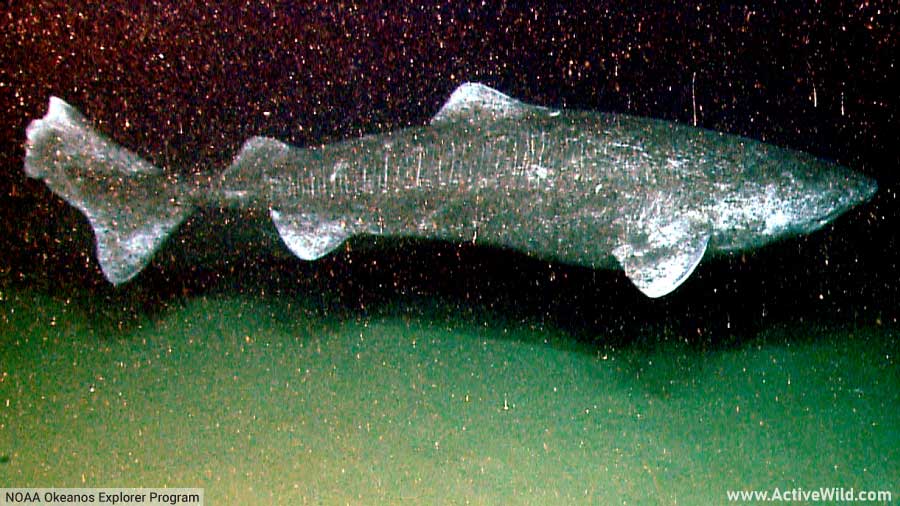
Scientific name: Somniosus microcephalus
Family: Somniosidae
Where found: North Atlantic and Arctic waters
Conservation status: Near Threatened
The Greenland Shark is a large shark species known for its slow speed and long lifespan. The species can live over 400 years, making it the longest-living vertebrate known.
The Greenland Shark has dark, rough skin and small eyes. It feeds mainly on fish, but has also been found with a variety of other animals in its stomach, including seals, caribou and even polar bears. Despite its slow speed, it is a successful predator, likely using ambush tactics to catch prey.
Discover More with Active Wild
You can find out more about this animal on this page: Greenland Shark Facts
Discover different types of sharks on this page: Types of Sharks
Gyrfalcon
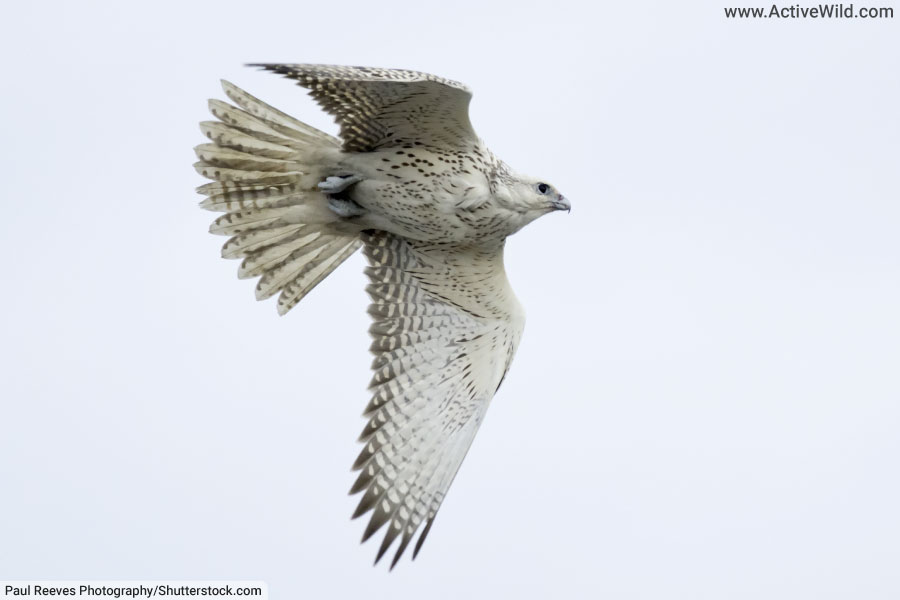
Scientific name: Falco rusticolus
Family: Falconidae
Where found: Arctic regions of the Northern Hemisphere
Conservation status: Least Concern
The Gyrfalcon is the largest of the falcon species. Its thick plumage is gray, white, or dark brown in color. The Gyrfalcon is a carnivore that primarily feeds on birds and mammals up to the size of a hare. It is known for its high-speed flight and precision in hunting, often capturing prey in mid-air.
The Gyrfalcon nests on the tundra, and either stays in the cold north during winter or migrates south for the colder months.
Discover More with Active Wild
You can find out more about birds on this page: Birds – The Ultimate Guide
Discover different types of birds on this page: Types of Birds
Harp Seal
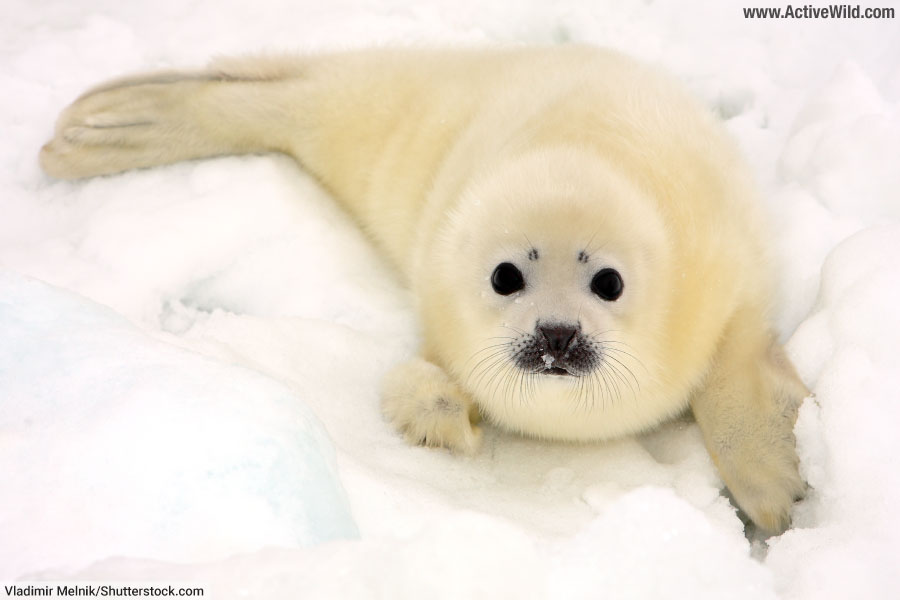
Scientific name: Pagophilus groenlandicus
Family: Phocidae
Where found: North Atlantic and Arctic waters
Conservation status: Least Concern
The Harp Seal is a medium-sized seal recognized by its black eyes and the distinctive, harp-shaped pattern on the back of adult individuals. A thick layer of blubber provides the seal with insulation in the cold waters.
The Harp Seal primarily feeds on fish and crustaceans. A common predator of the harp seal is the polar bear.
Discover More with Active Wild
You can see more Arctic seals on this page: Arctic Seals List with Pictures & Facts
Discover different types of mammals on this page: Types of Mammals
Ivory Gull
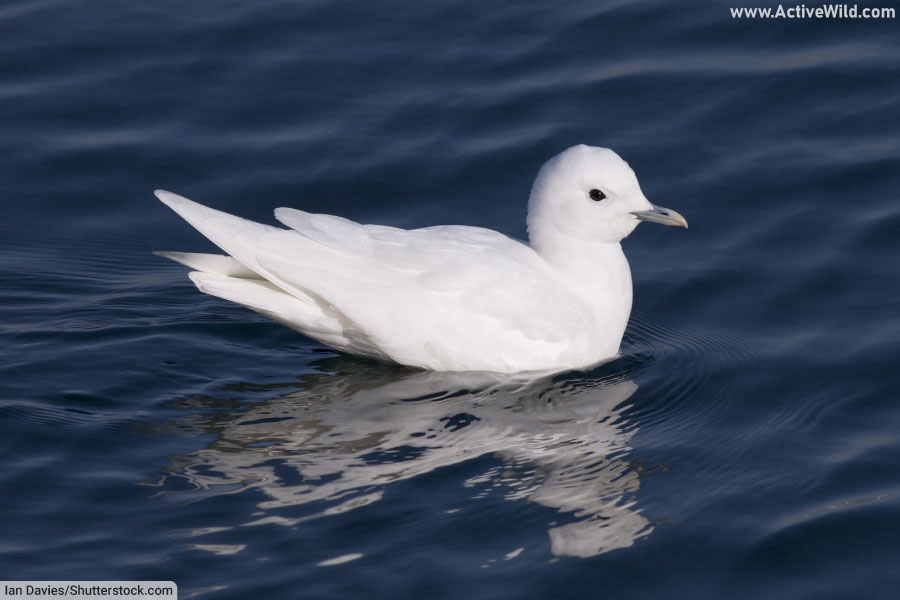
Scientific name: Pagophila eburnea
Family: Laridae
Where found: High Arctic regions of Canada, Greenland, and Eurasia
Conservation status: Near Threatened
The Ivory Gull is a small seabird known for its completely white plumage, which helps it blend into its snowy surroundings. It has a thick, rounded body, a small black eye, and a yellow bill with a red tip.
The Ivory Gull feeds on fish, invertebrates, and carrion. It is known for its remote and inaccessible nesting sites on rocky cliffs and ice floes.
Discover More with Active Wild
You can find out more about birds on this page: Birds – The Ultimate Guide
Discover different types of birds on this page: Types of Birds
Lemmings
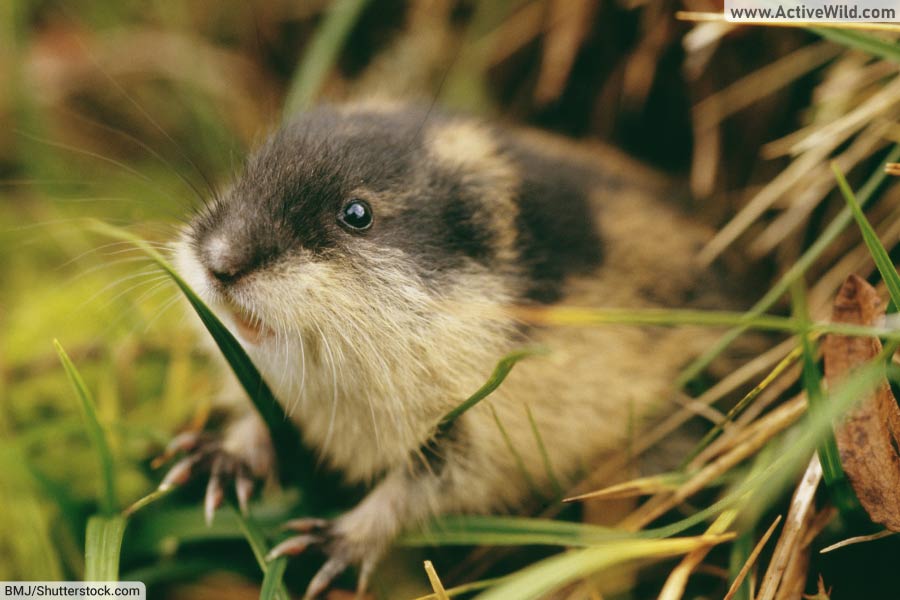
Scientific names: Lemmus and Dicrostonyx genera
Family: Cricetidae
Where found: Arctic and Subarctic regions across the Northern Hemisphere
Conservation status: Species vary, but most are Least Concern
Lemmings are small rodents native to the tundra and boreal forests, particularly in the Arctic regions of North America, Europe, and Asia. One of the best-known species is the Norway lemming, Lemmus lemmus.
About 13 to 18 cm / 5 to 7 inches in length, lemmings are compact creatures with short legs, a stout body, and a short tail. Lemmings have a thick, soft fur coat that varies in color depending on the species and season, ranging from grey to brown or even reddish hues, turning white in winter for some species. They are herbivores, feeding on leaves, shoots, bark, roots, and berries.
Lemmings are well-known for their population booms and crashes, which occur in cycles. During a population boom, lemmings may disperse in search of new habitats, sometimes leading to the myth that they commit mass suicide by jumping off cliffs, a misconception fueled by a controversial 1950s Disney documentary. In reality, these mass migrations are a natural response to overpopulation and do not end in intentional mass death.
Lemmings are an important part of the tundra ecosystem as a food source for many predators, including foxes, owls, and weasels. They are also important for soil aeration through their burrowing activities. Their population dynamics can significantly impact the overall health and balance of the tundra ecosystem.
Discover More with Active Wild
You can find out more about rodents on this page: Rodents – The Ultimate Guide
Muskox
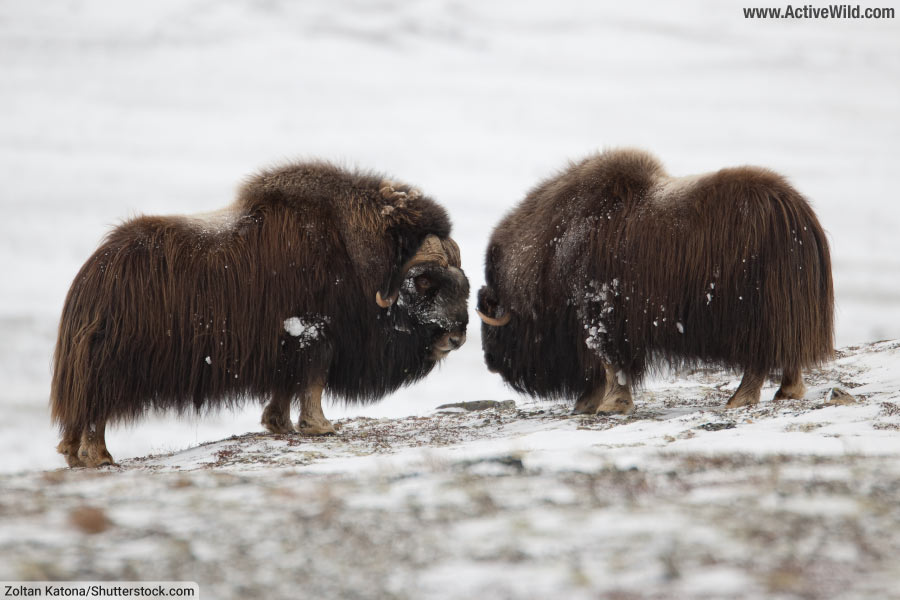
Scientific name: Ovibos moschatus
Family: Bovidae
Where found: Arctic regions of North America and Greenland
Conservation status: Least Concern
The musk ox, or muskox, is a large tundra mammal identified by its shaggy coat and curved horns. They are named for the strong, musky odor emitted by males during the mating season
The musk ox has a robust body adapted to withstand the harsh Arctic environment. It is an herbivore whose diet consists mainly of grasses, mosses, and lichens.
When threatened, the muskox forms a tight circle with other members of the herd to protect the young. The species’ main predator is the Arctic wolf.
Discover More with Active Wild
You can find out more about this animal on this page: Muskox Facts
You can see more horned animals on this page: Animals With Horns
Narwhal

Scientific name: Monodon monoceros
Family: Monodontidae
Where found: Arctic waters around Greenland, Canada, and Russia
Conservation status: Near Threatened
The Narwhal is a medium-sized whale known for the long, spiral tusk protruding from head of the male. This tusk is actually an elongated tooth.
The Narwhal has a robust body, rounded head, and mottled gray skin. It feeds primarily on fish, shrimp, squid, and other aquatic organisms. It is known for its deep-diving ability, and is capable of diving more than 1,500 meters / 4,921 feet below the surface.
Discover More with Active Wild
You can find out more about this animal on this page: Narwhal Facts
You can see more ocean animals on this page: Ocean Animals List with Pictures & Facts
Northern Pintail
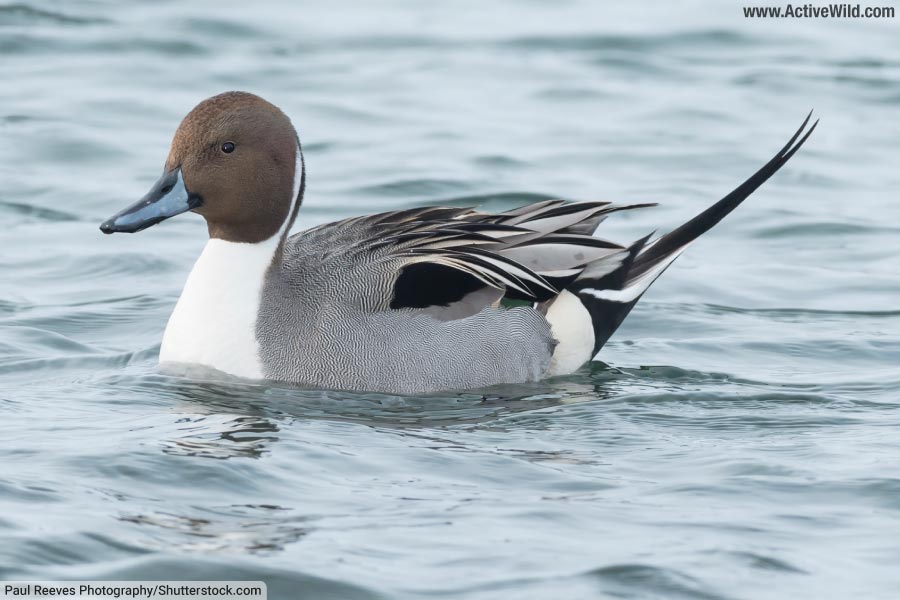
Scientific name: Anas acuta
Family: Anatidae
Where found: Wetlands across the Northern Hemisphere
Conservation status: Least Concern
The Northern Pintail is a medium-sized duck identified by its slender body, long neck, and pointed tail, which is longer in the male. The male has a distinctive brown head, white breast, and gray body, while the female is more subdued in color.
The Northern Pintail feeds on seeds and aquatic invertebrates. The species breeds in a variety of region in the Northern Hemisphere, including the tundra. Most populations migrate south in the winter.
Discover More with Active Wild
You can find out more about birds on this page: Birds – The Ultimate Guide
Discover different types of birds on this page: Types of Birds
Northern Red-Backed Vole

Scientific name: Myodes rutilus
Family: Cricetidae
Where found: Northern and eastern parts of Europe, Siberia, and North America
Conservation status: Least Concern
The Northern Red-backed Vole is a small rodent with reddish-brown fur on the upper parts of its body (which gives the species its name) and gray or white fur on the underside. It has a compact body, a short tail, and small ears.
The Northern Red-backed Vole is found in taiga forests as well as in tundra. It feeds on seeds, fruits, and insects.
Discover More with Active Wild
You can find out more about rodents on this page: Rodents – The Ultimate Guide
Polar Bear

Scientific name: Ursus maritimus
Family: Ursidae
Where found: Throughout the Arctic Circle
Conservation status: Vulnerable
Description:
No list of tundra animals would be complete without the polar bear, one of the world’s most recognizable species. On average the largest of the eight living bear species, the polar bear can be identified by its white fur, which helps it blend into the icy, snowy environment.
The polar bear is highly adapted for survival in the Arctic, with a stocky body, a small head, and large, paddle-like feet for swimming.
The most carnivorous of the bears, the polar bear primarily feeds on seals, and is a powerful swimmer, often hunting in the water.
Discover More with Active Wild
You can find out more about this animal on this page: Polar Bear Facts
You can find out more about bears on this page: Bears – The Ultimate Guide
Discover all eight types of bear on this page: Types of Bears
Ringed Seal

Scientific name: Pusa hispida
Family: Phocidae
Where found: Throughout the Arctic Ocean
Conservation status: Least Concern
The Ringed Seal is the smallest and most common seal found in the Arctic. It is named for the distinctive, ring-like patterns on its gray or silver fur. It has a small head, short flippers, and a robust body.
The Ringed Seal primarily feeds on fish and invertebrates. The species’ average lifespan is 40 years. Its predators include the polar bear and killer whale.
Discover More with Active Wild
You can see more Arctic seals on this page: Arctic Seals List with Pictures & Facts
Discover different types of mammals on this page: Types of Mammals
Rock Ptarmigan
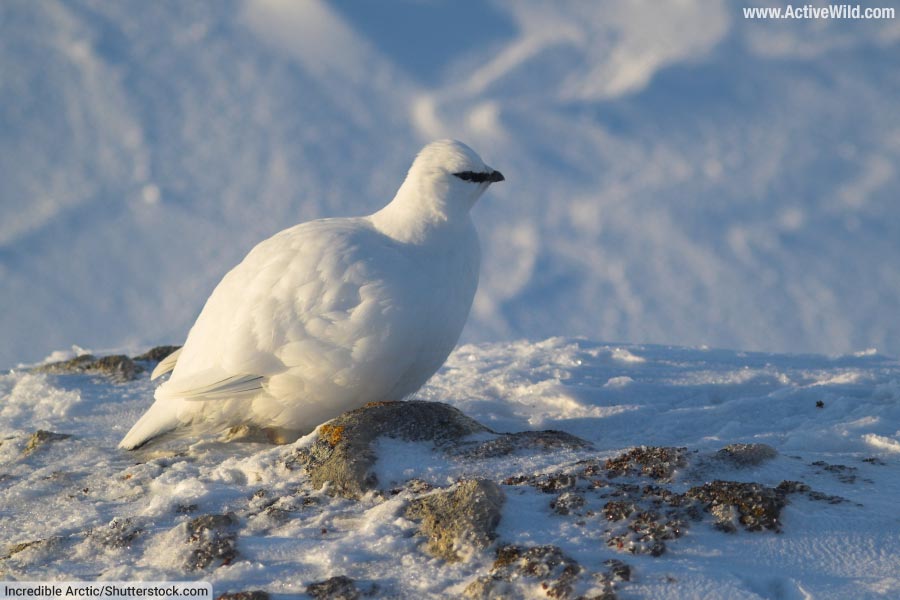
Scientific name: Lagopus muta
Family: Phasianidae
Where found: Arctic and alpine regions across the Northern Hemisphere
Conservation status: Least Concern
The Rock Ptarmigan is a member of the family Phasianidae, which also includes birds such as pheasants, grouse, chickens and turkeys. It has a compact body, a small black bill, and feathered feet, and is known for its seasonal camouflage—white in winter and brown in summer.
The Rock Ptarmigan feeds on leaves, flowers, berries, and insects. It is known for its remarkable ability to blend into its environment, making it difficult for predators to spot.
Discover More with Active Wild
You can find out more about birds on this page: Birds – The Ultimate Guide
Discover different types of birds on this page: Types of Birds
Snow Bunting

Scientific name: Plectrophenax nivalis
Family: Calcariidae
Where found: Arctic regions of the Northern Hemisphere
Conservation status: Least Concern
The Snow Bunting is a small passerine (perching bird) with a white-gray chest and black and brown streaky markings on the back and wings. The Snow Bunting primarily feeds on seeds and insects. This hardy little bird nests in the Arctic tundra and migrates south in the winter.
Discover More with Active Wild
You can find out more about birds on this page: Birds – The Ultimate Guide
Discover different types of birds on this page: Types of Birds
Snow Goose

Scientific name: Anser caerulescens
Family: Anatidae
Where found: North America, migrating between Arctic Canada and the Southern United States/Mexico
Conservation status: Least Concern
The Snow Goose is a medium-sized goose that breeds in the Arctic tundra in the summer and overwinters the contiguous United States, with some individuals migrating as far south as Central America. The species forms large, noisy migratory flocks that can number in the thousands.
The most familiar variety of snow goose has white plumage and black-tipped wings, but the species also has a “blue morph” with a white head and gray-brown body. In this morph, the snow goose is often known as the “blue goose”.
Discover More with Active Wild
You can find out more about birds on this page: Birds – The Ultimate Guide
Discover different types of birds on this page: Types of Birds
Snowy Owl

Scientific name: Bubo scandiacus
Family: Strigidae
Where found: Arctic regions of North America, Europe, and Asia
Conservation status: Vulnerable
The Snowy Owl is a large owl known for its white plumage, which provides excellent camouflage in the snowy landscape of the Arctic tundra. The species has a robust body, a rounded head without ear tufts, and large yellow eyes.
Found in Arctic regions of North America, Europe and Asia, the Snowy Owl feeds on small mammals and birds, with lemmings being one of its main prey items.
When food is short, the snowy owl migrates south in large numbers, with individuals occasionally turning up in the southern United States.
Discover More with Active Wild
You can find out more about this animal on this page: Snowy Owl Facts
Tundra Shrew

Scientific name: Sorex tundrensis
Family: Soricidae
Where found: Tundra regions of Alaska, Canada, and Siberia
IUCN conservation status: Least Concern
The tundra shrew is a small, mouse-sized mammal with an elongated snout, small eyes, and dense, dark brown fur. Despite their appearance, shrews are not rodents, and belong to the order Eulipotyphla, along with animals such as hedgehogs and moles.
The Tundra Shrew primarily feeds on insects, spiders, and other small invertebrates, using its sensitive snout to locate prey. Like many shrews, has a high metabolic rate, requiring it to eat frequently.
The tundra shrew was once considered to be a subspecies of Arctic shrew, a closely-related species also found from the Arctic tundra to the northern contiguous United States.
Discover More with Active Wild
You can find out more about mammals on this page: Mammals – The Ultimate Guide
Discover different types of mammals on this page: Types of Mammals
Tundra Swan

Scientific name: Cygnus columbianus
Family: Anatidae
Where found: North America and Eurasia, migrating between Arctic breeding grounds and warmer wintering grounds
Conservation status: Least Concern
The Tundra Swan is a relatively small swan with white plumage and a yellow and black bill. The species is often split into two separate species: Bewick's swan (Cygnus bewickii), found in Eurasia; and the larger whistling swan (Cygnus columbianus), of North America.
The Tundra Swan primarily feeds on aquatic plants, but also eats grains and small invertebrates. Like many tundra birds, it migrates south for the winter months.
Discover More with Active Wild
You can find out more about birds on this page: Birds – The Ultimate Guide
Discover different types of birds on this page: Types of Birds
Walrus
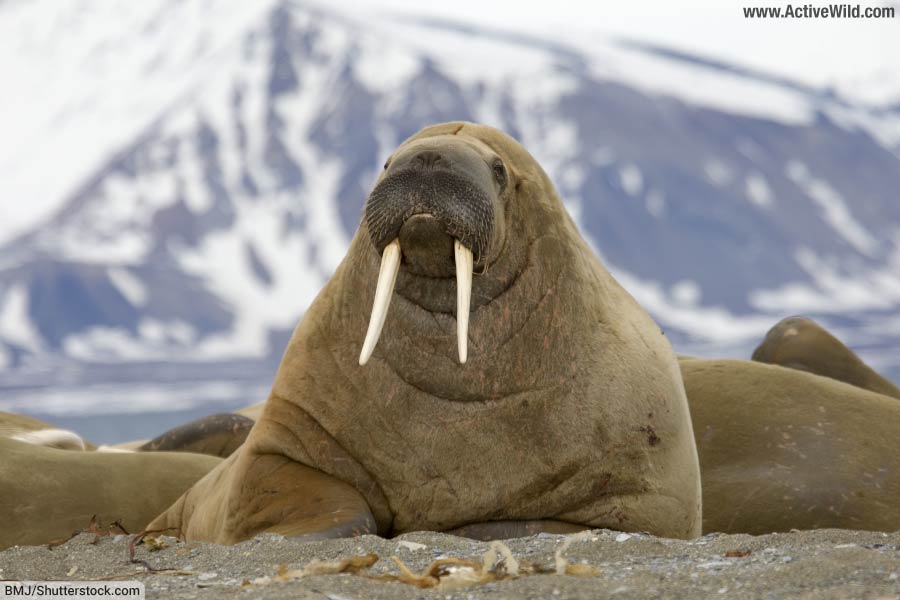
Scientific name: Odobenus rosmarus
Family: Odobenidae
Where found: Arctic regions of the Atlantic and Pacific Oceans
Conservation status: Vulnerable
One of the most familiar tundra species, the Walrus is a large marine mammal known for its long, sharp tusks, whiskered face, and wrinkled, brown skin. It has a bulky body, a small head, and flippers for locomotion.
The Walrus feeds on clams and other seabed invertebrates, using its sensitive whiskers to locate prey. It is known for its social nature, often seen in large herds on sea ice or beaches.
Discover More with Active Wild
You can find out more about this animal on this page: Walrus Facts
Further Reading
Become an expert on the entire animal kingdom: Animals - The Ultimate Guide
Discover amazing animals from all around the world: Animals Around The World
You can see more Arctic animals on this page: Arctic Animals

